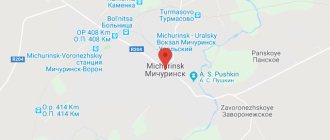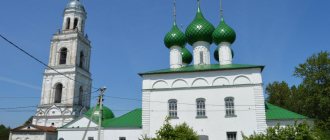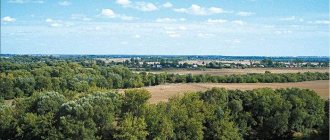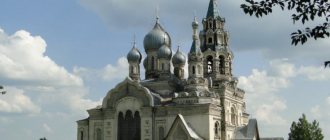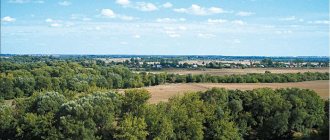Society
YARNOVOSTI decided to temporarily take a break from studying economic indicators and turn to issues of demography in the Yaroslavl region. It has already become commonplace that the population of the region decreases by several thousand people every year. We believe that this issue deserves to be considered in a broader retrospective.
The most accurate data is from population censuses. The first in the history of our state was a general census of the population of the Russian Empire in 1897. During the Soviet period, the All-Russian census of 1920, the All-Union censuses of 1926, 1937, 1939, 1959, 1970, 1979 and 1989 were conducted. In the history of modern Russia, the censuses of 2002 and 2010 were carried out, and the population census of the Crimean Federal District in 2014. The 2021 All-Russian Population Census was postponed to the summer of 2021 due to the spread of coronavirus.
Between censuses, population statistics are carried out by registering births and deaths, as well as registering the population at the place of residence. At the same time, errors accumulate, which are corrected during the next census. Thus, according to the results of the 2010 census, the population of the Yaroslavl region officially decreased by 38 thousand people compared to the previous year, whereas previously the annual reduction using the “reckoning” method was 5-7 thousand people per year.
The estimated population of the Yaroslavl region at the beginning of 2021 is 1,242,356 people. Thus, compared to the results of the 1989 census (1,470,367 people), the population of the region decreased by 228,011 people or 15.5%. At the same time, the maximum population of the region is considered to be in 1991 - 1,473,837 people (respectively, -231,481 people or -15.7% in 2021).
Let's look at how the population changed in large settlements of the Yaroslavl region (over 5,000 inhabitants). At the beginning of 2021, the number of residents in them has not been officially determined, so we will operate with data from 2021. The most correct comparison would be with the results of the last census of the Soviet period in 1989. For information, we will show the dynamics in comparison with the maximum recorded population value (indicating the year).
Thus, population decline over the past thirty years has occurred in all major settlements of the region, except for Tutaev. At the same time, in the regional center, Pereslavl-Zalessky, Rostov, Myshkin and the village of Borisoglebsky, the decrease in population (in percentage) does not exceed the average for the region. If we take into account the maximum values, then Rostov and Myshkin are excluded from this list.
The largest decrease in population - by more than a quarter! — recorded in Lyubim, Poshekhonye and Rybinsk. In Lyubim, the number of residents has decreased by almost 35% over half a century.
YARNOVOSTI plans to review the demographic situation in the municipal districts of the region in the near future.
03/10/2021 16:51
Print
demographics
general information
The cute provincial town of the Yaroslavl region has long been included in the Golden Ring of Russia. An amazing feature of Tutaev, which makes it a historical monument of bureaucratic bungling, is that the city, spread out on two banks of the Volga, does not have a bridge between them. Once upon a time there were two cities, after which two sides were named - Romanovskaya and Borisoglebskaya. The two banks, separated by a wide river, are connected only by a ferry crossing, which operates only in the warm season. In winter, the population of the city of Tutaev travels from one part to another through Yaroslavl, which is 40 km one way.
Thanks to the preserved atmosphere of a provincial Russian town, Tutaev became a film set for many feature films. The first film adaptation of “12 Chairs”, the second part of “Boomer” and several episodes of the series about the young Stirlitz - “Isaev. Diamonds for the dictatorship of the proletariat."
The largest enterprise is the Tutaevsky Motor Plant, which produces diesel engines for heavy-duty vehicles, tractors and river tugs. Thanks to the construction of the plant, the population of Tutaev increased significantly in the 70s.
Rybinsk is the second largest
About 200 thousand people live in Rybinsk. As with Yaroslavl, decline is typical here. Many demographic experts argue that the situation is close to catastrophic, because over 20 years the loss has amounted to 50 thousand people. The reason for this problem is the excess of mortality over the birth rate. Rybinsk is a densely populated city, since its area is only 101 km². There are a lot of old people living here, but, on the contrary, there are few young people. Young people tend to move to Moscow or St. Petersburg, as there is not enough work among the population.
Locals are experiencing difficulties with the lack of housing. There are very few objects under construction, so a small number of people still does not allow us to live in peace. As a rule, people rely on panel houses or cascading houses that were built in the 80s. The deterioration of the city's infrastructure is low. This allows you to quickly eliminate accidents related to water utilities and heat and power networks. The downside of proximity to Moscow plays a cruel joke. Many Muscovites are buying up real estate and buying out production facilities. This turns Rybinsk and its population into a dependent settlement.
Schools and kindergartens are not empty, but overcrowded; some parents have to wait a year or two to place their child. There are also few jobs; the lucky ones find employment in, which is considered the most prestigious.
History of Romanov
On the left bank of the Volga in 1283, as recorded in ancient chronicles, the Uglitsky prince Roman Vladimirovich founded a city, later named in his honor - Romanov. As a result of the raids of the Mongols and Novgorod ushkuiniks, it was completely destroyed several times.
In 1563, Ivan the Terrible gave the city to feed the Tatar Murzas, the future princes Yusupov. The mass resettlement of Tatars to Yaroslavl began; for two hundred years this region was a Muslim enclave. Not only in Romanovsky, but also in neighboring districts they made up the majority of the population. Several mosques were built, which were later dismantled. In the 18th century, most of them converted to Orthodoxy, and staunch Muslims were evicted near Kostroma.
At the beginning of the 17th century, during the Time of Troubles, the city was again plundered and burned. Romanov was rebuilt again, and in 1777 it became a district center.
Uglich is another tourist city
Uglich has also become famous as a tourist town, home to more than 32 thousand people. There are a lot of people in a small area, but this in no way affects life. Clean air, a lot of nature and proximity to Moscow. This is what local residents consider important advantages. Of course, sometimes the lack of places in kindergartens and clinics reminds us of itself, but otherwise there are no significant problems due to the high population density.
The example of the Yaroslavl region and the largest city shows that through competent actions on the part of the authorities, the problem of overpopulation can be prevented. The main thing that municipalities pay attention to is just three points:
- thoughtful urban development;
- availability of a sufficient number of public transport units;
- construction of new municipal buildings.
For cities that are not over a million people, these points remain the most important.
United City
In 1822, in order to save money on administration, the cities were united into one - Romanov-Borisoglebsk. At the beginning of the 20th century, 8.5 thousand people lived in the city; the working population of Tutaev worked in 12 flax factories and sheepskin manufacturing.
In 1818, the city was called Tutaev-Lunacharsk for a whole month, then for convenience they decided to leave only the first part. Tutaev is the name of an ordinary Red Army soldier who died during the suppression of the White Guard rebellion. Since the beginning of perestroika, there have been several attempts to rename it, but in a referendum in 2021, the city population voted to retain the name.
Yaroslavl is the largest city in the region
More than 600 thousand people live here. So far the population is showing regular outflow. Many people are looking to move to larger cities to find more opportunities. The birth rate is increasing, while the mortality rate, on the contrary, is decreasing. The collapse of the USSR brought many troubles, so the entire region suffered demographically, but now the situation has improved significantly. Among the visitors, citizens of Kazakhstan and CIS countries stand out. However, there are only 4% of them, the rest are Russians. There are also two large diasporas, namely Azerbaijani and Armenian.
The large population does not affect the convenience of life for city residents. The problem with infrastructure is familiar to everyone, but this is directly related to the work of housing and communal services, which do not always perform it responsibly. The city has a high level of amenities. There are many playgrounds, the development is more or less planned, so traffic jams are rare rather than the rule. Yaroslavl is still far from becoming a million-plus city - we won’t have to wait for overpopulation just yet. There are enough places in schools, kindergartens and various municipal institutions for everyone. The population itself actively cares about their city, improving its infrastructure. There are plenty of public transport units and well-thought-out routes, so transport collapses do not happen.
Population of Tutaev
The development of the city has always been under strong pressure from the nearby regional center - Yaroslavl. The population of Tutaev was first determined in 1856, then 5,100 people lived in the town. According to the first census of the Russian Empire, held in 1897, there were already 6,700 inhabitants. In the pre-revolutionary period, the population grew slowly, mainly due to natural increase.
After the 1917 revolution, the population of Tutaev (according to the first available data from 1931) almost doubled to 7,600, compared to the last data of the Russian Empire in 1913. In the period from 1931 to 1939. The number of city residents grew to 18,500, the population growing due to the influx of rural population during the period of Soviet industrialization. The next surge in the population increase in Tutaev occurred in connection with the construction of a motor plant, which for a long time determined the economic and demographic situation in the city. The population reached its maximum in 1996, reaching a population of 45,700 people. In recent years (since 2015), the number of residents has been growing slightly; now 40,400 people live in Tutaev.
Tutaev
City of Romanov
City of Romanov
was founded in the 2nd half of the 13th century by the Uglitsky prince Roman Vladimirovich, who was subsequently canonized among the faithful, to whose name the name of the city goes back[9].
Built in 1283, about which there are corresponding records in the chronicle. [ source not specified 1919 days
] During one of the raids of the horde, as well as repeated attacks by the Novgorod ushkuiniki, the city was completely destroyed several times. The main means of defense was the tyn, which was periodically renewed by the townspeople.
Later, the territory on which the remains of the city were located was part of the Yaroslavl principality. In 1345, when the Yaroslavl prince Vasily Davydovich Groznye Ochi died, his son Roman Vasilyevich rebuilt the city and made it the center of an independent Romanov principality[10]. In the center of the revived city stood the wooden Cathedral Church in honor of the Exaltation of the Holy Cross, built by the Uglitsky prince, the prince's tower and outbuildings. Soon a settlement grew around the fortress, also surrounded by tyn.
In the 15th century, the principality became part of the Grand Duchy of Moscow. In 1468, Grand Duchess Maria Yaroslavna, whose personal possession the city was then, updated the defensive structures: ramparts, a ditch, a drawbridge, and towers appeared (according to various sources, 7-8 pieces). In 1472, she transferred the city to the ownership of her son, Uglich Prince Andrei Bolshoi; after his arrest in 1491, Romanov finally became part of the domain of the Moscow prince.
Around 1468, Afanasy Nikitin visited the city.[11]
In 1563, by the will of Ivan the Terrible, a massive resettlement of Nogais and Tatars to Yaroslavl took place. The city of Romanov was completely given over to the Nogai Murzas[12] for two hundred years after they were awarded the princely title. This is where the princely family of the Yusupovs came from. According to I. Ya. Gurlyand, professor of the Yaroslavl Demidov Lyceum, “...the settlement of the original Russian area by Tatar immigrants is a kind of historical whim that led to the dominance of the Tatars not only in the Romanovsky, but also in the neighboring Yaroslavl districts...”[13] The state pursued a policy Christianization of the Tatars. By decree of December 13, 1760, the Romanov Tatars, who refused to convert to Orthodoxy, were resettled to a settlement near Kostroma (to the so-called Black Village). During the stay of the Tatar Murzas, Romanov acquired a Muslim appearance; several mosques were built on the outskirts of the city, but after the relocation of Tatars staunch in their faith to the outskirts of Kostroma, all mosques in Romanov were dismantled[14]. The development of sheep farming here, which gave rise to the famous Romanov sheep breed, is associated with the resettlement of the Tatars to the city.
During the Time of Troubles (early 17th century), Romanov was plundered and burned, but was later reborn. It developed shipbuilding, built ships - “Romanovkas”, which were distinguished by speed and maneuverability. Trade flourished.
In 1660, a stone Cathedral of the Exaltation of the Cross
. The cathedral was built by Yaroslavl stone carvers and painted by Yaroslavl and Kostroma painters. A number of other outstanding temples were built in the 17th and 18th centuries. In addition to them, merchants built stone residential buildings.
In 1777, Romanov became the center of the district of the Yaroslavl province[15].
Borisoglebsk city
The first mentions of settlements on the Borisoglebskaya side were even before the construction of Romanov.
Recent research has shown that in 1238 Yaroslavl was attacked by the Mongolians. This is evidenced, including by the Laurentian Chronicle and the latest research by archaeologists[16]. Some of the Yaroslavl residents, escaping from the invasion, settled in Borisoglebsk. And after that, Prince Roman Vladimirovich, having arrived in the future Borisoglebsk, saw on the other bank a place ideal for creating a fortified settlement, and the first builders of Romanov were Borisoglebsk residents and settled refugees from Yaroslavl.
By the 15th century, on the right bank of the Volga, opposite the city of Romanov, the Borisoglebsk settlement grew into the Borisoglebsk fishing settlement
, which bore the name of the first Russian saints, martyrs-passion-bearers Princes Boris and Gleb. In the 16th century, it was assigned to the Moscow palace order.
During the Time of Troubles, the settlement, like Romanov, was plundered and burned. Life soon returned; The fishermen who lived in the settlement delivered the fish to the royal table.
In 1652, in Borisoglebskaya Sloboda, the first stone, tented church was built in the name of the Smolensk Icon of the Mother of God on the site of a wooden monastery; However, it was built poorly and became unusable already in 1670. In 1678, on its basis, Yaroslavl craftsmen built the city’s most famous temple - the Resurrection Cathedral
, which was painted by Yaroslavl artists around 1680.
In 1660, Moscow masons built the more modest Annunciation Church
.
In 1777, Borisoglebskaya Sloboda was transformed into the city of Borisoglebsk
[8].
At the same time, it was administratively united with the neighboring Yamskaya Sloboda
and the village of
Novo-Blagoveshchenye
. The new city, like Romanov, became the district center of the Yaroslavl province. At the end of the 18th century, Romanov and Borisoglebsk, like many Russian cities, received regular plans, but due to the complexity of the terrain, these plans had little impact on the development of both cities.
City of Romanov-Borisoglebsk
In 1822, Romanov and Borisoglebsk were united into a single city of Romanov-Borisoglebsk
[8]; this was done in accordance with the decree of Alexander I of May 30, 1822 and was explained by the goals of economy in managing cities.
During the 19th century, the united city developed slowly, suppressed by the proximity of the large Yaroslavl. Masonry construction in the city decreased - during the 19th century, not a single outstanding building was created; residential buildings were erected according to “model designs”. However, in some sectors of the economy, some success was achieved: in the vicinity of the city, Romanov sheep, famous throughout Russia, were bred, a sheepskin and fur factory appeared in the city, the Romanov flax manufactory and the Konstantinovsky mineral oil plant operated near the city. At this time, according to foreign dictionaries that mentioned Romanov-Borisoglebsk, there were 1,440 industries in the city with a population of no more than 6.5 thousand.
At the beginning of the 20th century, the city had about 8.5 thousand residents who worked in 12 local factories, of which the most important was the Romanov Linen Manufactory Partnership with a turnover of more than a million rubles. Significant factories producing sheepskin made Romanov-Borisoglebsk famous for the high quality of its processing[17].
Tutaev city
On November 7, 1918, a solemn meeting dedicated to the first anniversary of the October Revolution took place in Romanov-Borisoglebsk. Present were members of the district committee of the RCP(b), the executive committee of the district council, 3 factory committees, the bureau of internationalist teachers, councils of trade union organizations, and representatives of the Red Army. The chairman was the secretary of the district committee of the RCP (b) N.F. Dobrokhotov, the secretaries were Lokhanin and Sharov. The main issue discussed was the renaming of the city and its district. It was proposed to change the name of the city to Lunacharsk
in honor of the People's Commissar of Education A.V. Lunacharsky (1875-1933),
Leninsk
in honor of the Chairman of the Council of People's Commissars of the RSFSR V.I. Lenin (1870-1924),
Razin
in honor of the leader of the peasant uprising Stepan Razin (1630-1671),
Kommunar-Spartak
in honor of the participants of the Paris Commune (1871) and the leader of the slave uprising in Rome Spartacus [
source not specified 1860 days
] (about 120 BC - 71 BC),
Volodarsk
in honor of the revolutionary V. Volodarsky (1891-1918) ,
Tutaevsk
in honor of ordinary Red Army soldier I.P. Tutaev (1897-1918), who died during the suppression of the Yaroslavl rebellion.
We settled on “Tutaevsk,” but at the end of the meeting a certain Levchuk suggested adding “Lunacharsk” to the name. The meeting unanimously adopted a new name - Tutaev-Lunacharsk
, and the double name was accompanied by the note “for the second part.” On November 9, 1918, the decision was consolidated at a plenary meeting of the district executive committee (chairman Shashkin, secretary Polikarpov)[18][19].
On December 9, 1918, at a plenary meeting of the district executive committee (chairman N.N. Panin, secretary Polikarpov), in connection with the proposal of the Cheka to leave “for the convenience of telegraph communications,” one word in the name, the addition “Lunacharsk” was removed, and it was decided to call the city simply Tutaev
- “in memory of comrade Red Army soldier Tutaev, who died in the line of duty during the White Guard rebellion at the hands of White Guard gangs at the dacha of [Yaroslavl mayor] Lopatin.” A message about the renaming appeared in the press on December 18 in “Izvestia of the Tutaevsky Executive Committee of the Soviets of Peasant and Workers’ Deputies” No. 72. Accordingly, the district received the name Tutaevsky[18][19].
In March 1941, the executive committee of the Yaroslavl Regional Council decided to rename Tutaev to the city named after Mendeleev in honor of the scientist D.I. Mendeleev, with whose participation the Konstantinovsky mineral oil plant was built not far from the city. The document was signed by the chairman of the executive committee V. Gogosov and secretary P. Kusmartsev. The reason was that the renaming of Romanov-Borisoglebsk was never formally approved by the government of the RSFSR. However, the outbreak of the Great Patriotic War prevented the plan from being realized[18][19].
In the post-war period, the traditional industries of flax processing, clothing and furniture production continued to develop in Tutaev. In the early 1970s, the largest engine-building plant in the Yaroslavl region (Tutaevsky Motor Plant (TMZ)) was built.
Question about returning the old name
The question of returning the old name to the city arose, as in other cities renamed during the Soviet era, at the beginning of Perestroika. Attempts were made repeatedly to bring this idea to life, but in two referendums held, the townspeople opposed the renaming. Opponents of the renaming believe that it will only distract from more serious problems, will cause disagreements among citizens, and will lead to a waste of budget funds, money and time of residents who will have to change all their documents. It is indicated that the people who lived in Romanov-Borisoglebsk no longer exist, and for most current townspeople, the modern name of the city is associated not with the deceased Red Army soldier, but with the place where they grew up and lived. Supporters of renaming, including the current one [ clarify
] the head of the urban settlement, Sergei Ershov, believe that the return of the previous name will have a positive effect on attracting tourists.
The entire event, according to their calculations, will cost only 400 thousand rubles (as of December 2009); There will be no special change of documents. It was indicated that the city received the name of Ilya Tutaev spontaneously, the decision was made by a narrow circle of people; in addition, it was never formally enshrined at the state level. Do you have an opinion [ whose?
] that the majority of townspeople are indifferent to the issue of renaming[18][19].
On May 27, 2015, the city council made a decision to rename the ancient city of Tutaev to Romanov-Borisoglebsk. The city authorities believed that the new name would draw the attention of citizens and tourists to the historical past of the city, and would contribute to the growth of the city’s attractiveness from a tourist point of view. Documents on renaming the city were sent for consideration to the Yaroslavl Regional Duma for subsequent appeal to the Russian government[20].
Deputies of the Yaroslavl Regional Duma approved [ when?
] renaming the city of Tutaev[21].
On December 2, 2015, Rosreestr gave a positive expert opinion on the proposal of the Yaroslavl Regional Duma to rename Tutaev to Romanov-Borisoglebsk[22].
On December 11, 2015, the Yaroslavl Regional Duma submitted a legislative initiative to rename the city of Tutaev to the State Duma of the Russian Federation[23].
On November 1, 2021, the Russian State Duma Committee on Regional Policy and Problems of the North and Far East voted to return Tutaev to its historical name Romanov-Borisoglebsk[24]. Federal deputies supported the initiative of their Yaroslavl colleagues. At the same time, it was decided that the Tutaevsky district would not be renamed[25].
In November [ specify
] The State Duma, at the proposal of the Yaroslavl Regional Duma, adopted in the first reading a bill on renaming the city: 385 deputies voted “for” the renaming, 37 “against”, two abstained[26][27].
It was supposed to be adopted in the second reading in February 2021, but this did not happen. In December 2021, the interim acting governor of the Yaroslavl region, Dmitry Mironov, promised at a meeting with city residents that the renaming should not take place without taking into account the opinions of residents, and a referendum would be held on this issue. As it later turned out, renaming the city does not relate to issues of local importance, so the referendum will not be held[26].
It was decided to conduct a population survey on September 10, [ clarify
] on election day.
However, conducting a survey at polling stations, as the organizers planned, is prohibited by law. Therefore, they decided to place voting places 50 meters from the polling stations. The opposing [ clarify
] parties agreed that this survey would be the last, and its results would be recognized by both sides[26].
On September 2, 2021, the sociological agency AKSIO conducted[28][29] an independent survey, interviewing 6,641 people (more than 16.43% of the city’s population). Of these, 1,748 people (26.32%) voted for renaming Tutaev to Romanov-Borisoglebsk. 4874 people (73.39%) were in favor of maintaining the current name.
|
|
|
Attractions
If you want to plunge into the atmosphere of an ancient Russian provincial town, then welcome to Tutaev. There are many historical buildings and ancient temples from the 17th-19th centuries. in varying degrees of preservation. Tutaev is rightfully included in the list of historical settlements of the country; it closes the Golden Ring, being the twelfth (out of 12) point of the popular tourist route.
One of the most beautiful churches in the city is the Resurrection Cathedral, built on the steep Volga bank in the second half of the 17th century. It is located in the central part of the city, on the site of Borisoglebskaya Sloboda. The temple was not closed during Soviet times, so the interior decoration was preserved. On the other bank of the Volga is the Cathedral of the Exaltation of the Cross, the oldest historical monument of the city; in 1947 it was recognized as a monument of federal significance. Built by Yaroslavl craftsmen in 1658. The population of Tutaev is rightfully proud of many other city churches.
In the city you can see historical buildings, residential buildings of merchants and noble estates. There are several museums, including the museum of Admiral F. F. Ushakov, a native of the Romanovsky district.
Pereslavl-Zalessky - a cozy city
This is a city very rich in history and culture. There are 25 temples and 10 museums here. It can be called truly densely populated and even included in the list of the most amazing cities in the country. This is a purely tourist city, where people come to relax, breathe fresh air and see the sights. There are several factories that are not difficult to get to. Therefore, Pereslavl-Zalessky, despite its small area, is comfortable for living. The population is often engaged in business; many go to Moscow to earn money.
However, there are difficulties with queuing up to get a place in kindergarten or school. Clinics also cannot offer enough staff. But the population does not suffer from this, since Pereslavl-Zalessky is inhabited by friendly people who always find something to do to earn money.
Hotels and restaurants
Hotels offer a limited selection to guests. But there are hotels here where you can stay with all the amenities. As for catering, the choice of canteens and cafes is small. But the food tastes great and is prepared only from environmentally friendly products. Local baked goods are sold on the streets.
There are many libraries and cultural institutions in the city - a youth library, a palace of culture, a centralized regional library, a library named after. N. N. Nosova and others.
